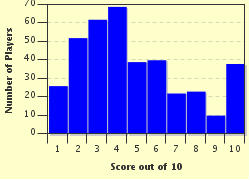Quiz Answer Key and Fun Facts
1. The Bing cherry was developed by an Oregon horticulturist named Seth Lewelling (or Luelling or Llewelyn - spellings vary). For whom is it named?
2. For several years I was on the chaplaincy staff at a camp on Lake of the Woods, Ontario, and one of the activities that delighted the kids was sitting around a campfire toasting marshmallows and making S'Mores. S'Mores are made by sandwiching a toasted marshmallow and a square of chocolate between two Graham crackers (if you're making one for me, please use dark chocolate). For which of these Grahams are the crackers named?
3. Chicken a la King is so named because it was first created by a royal chef.
4. A melt-in-your mouth meringue dessert is named for a famous stage star. Which one?
5. For whom were Crepes Suzette named?
6. Chicken Tetrazzini was named for opera singer Luisa Tetrazzini, but where was it first served?
7. Who or what gave Lobster Newberg its name?
8. For whom is Caesar salad named?
9. Which American First Lady had a fudge recipe named for her?
10. Homentashn or Hamantashn are cookies that are traditional treats for which Jewish holiday?
Source: Author
Cymruambyth
This quiz was reviewed by FunTrivia editor
Leau before going online.
Any errors found in FunTrivia content are routinely corrected through our feedback system.


